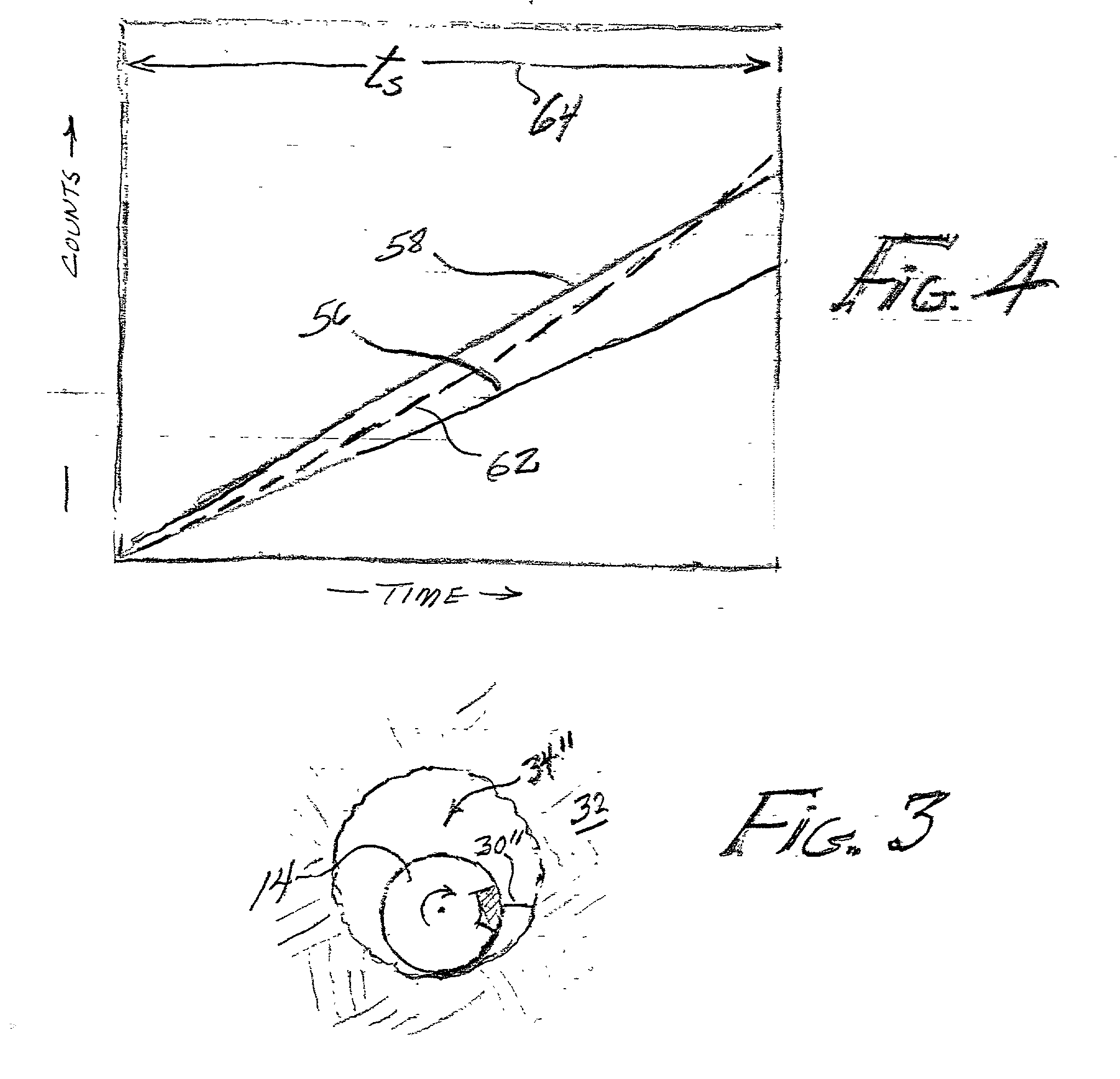Standoff compensation for nuclear measurements
a technology of standoff compensation and nuclear measurement, which is applied in the direction of instruments, radiation measurement, nuclear radiation detection, etc., can solve the problems of almost universal standoff of the instrument from the borehole wall, the adverse influence of the borehole conditions on the system of nuclear instruments used to measure earth formation parameters from within the well borehole, and the adverse influence of the borehole conditions
- Summary
- Abstract
- Description
- Claims
- Application Information
AI Technical Summary
Problems solved by technology
Method used
Image
Examples
example 2
[0090] An 8 in. diameter tool is rotating in place in a 8.75 in diameter borehole. This standoff in this example is varying randomly as shown in FIG. 8, (rather than contiguously as in example 1), from 0.00 in. to 0.75. Data is again sampled at a time interval .DELTA.t=50 ms, and the sample period is t.sub.S=5 sec.
[0091] For each method and each example, 100 "test cases" comprising sample periods of .DELTA.t 50 ms were taken to obtain a fair assessment of statistical variation and accuracy, with accuracy being defined conventionally as a comparison between the magnitudes of measured and true formation density. In both examples, it is assumed that the true formation density is 2.71 grams / cubic centimeter (gm / cc) and the borehole is filled with a mud of density 1.25 gm / cc. Random Guassian statistics plus 1% random noise were added to the data to simulate realistic LWD conditions. Apparent densities were corrected using the spine and rib method.
[0092] FIG. 11 illustrated the results of...
PUM
 Login to View More
Login to View More Abstract
Description
Claims
Application Information
 Login to View More
Login to View More - R&D
- Intellectual Property
- Life Sciences
- Materials
- Tech Scout
- Unparalleled Data Quality
- Higher Quality Content
- 60% Fewer Hallucinations
Browse by: Latest US Patents, China's latest patents, Technical Efficacy Thesaurus, Application Domain, Technology Topic, Popular Technical Reports.
© 2025 PatSnap. All rights reserved.Legal|Privacy policy|Modern Slavery Act Transparency Statement|Sitemap|About US| Contact US: help@patsnap.com



